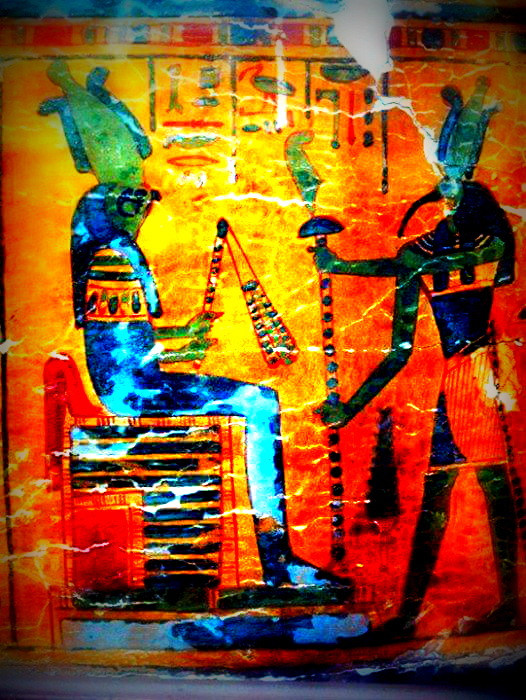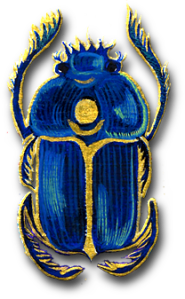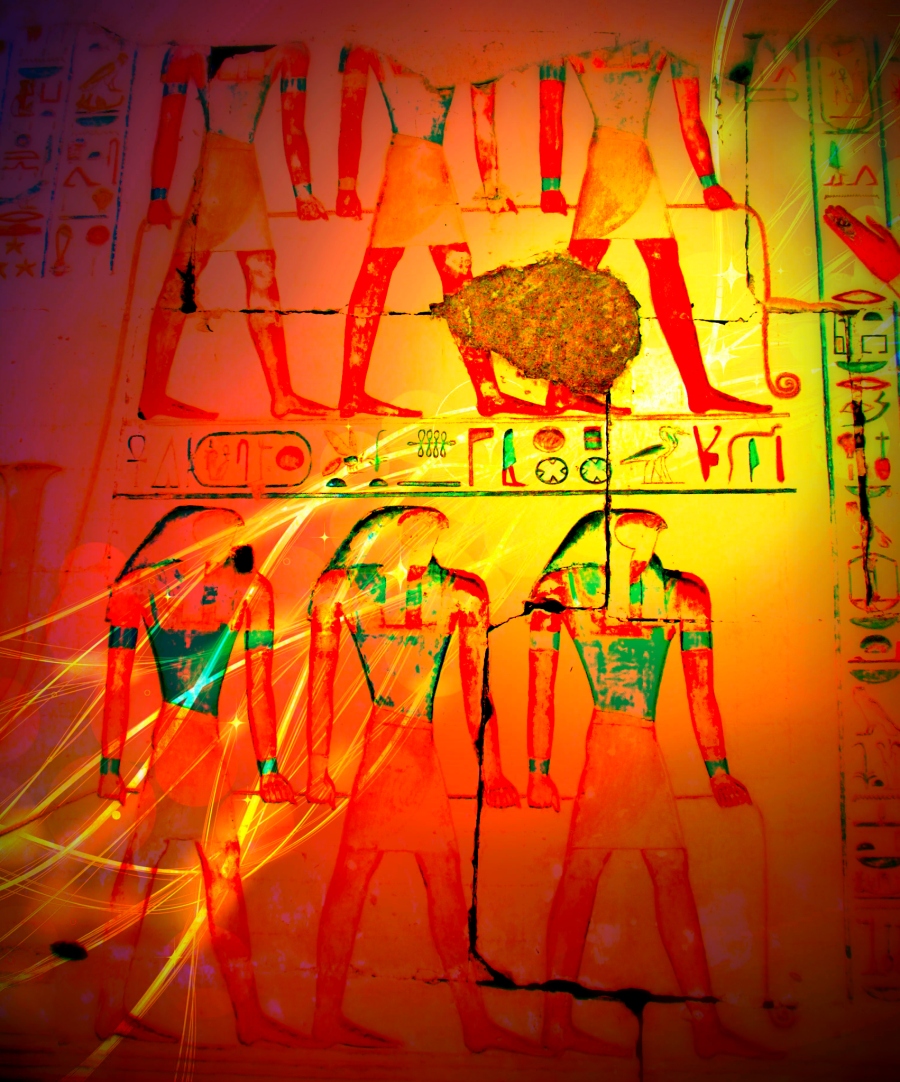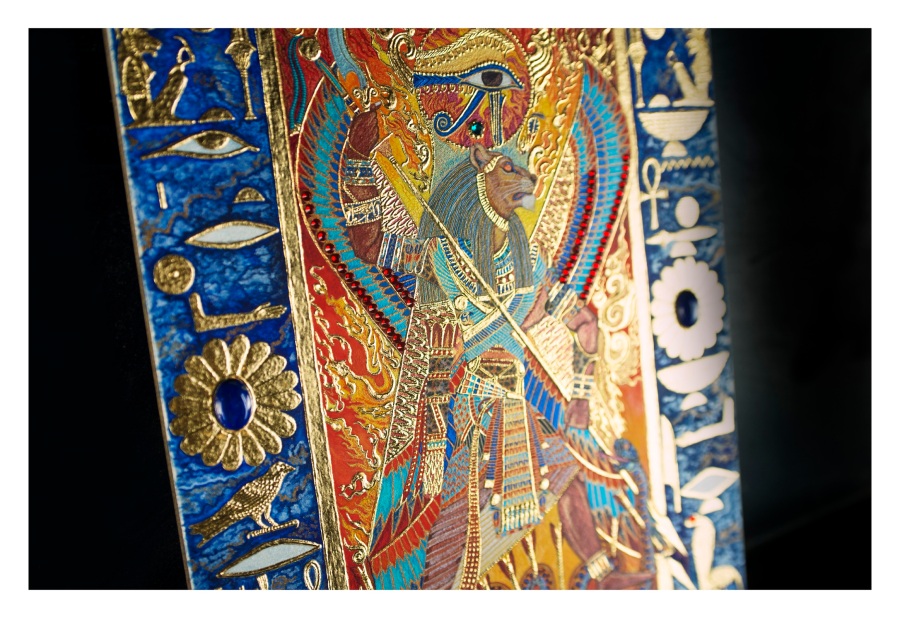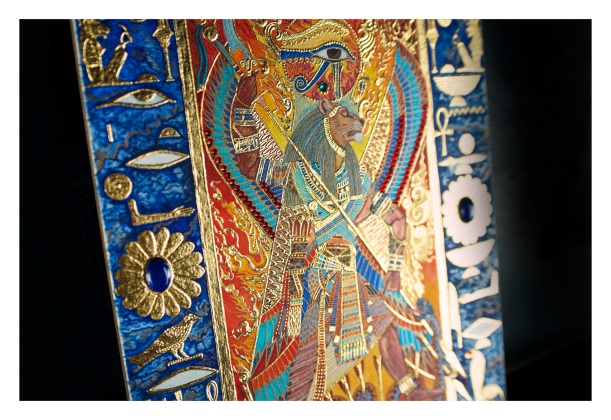
I give offerings of the heart to Amun-Ra,
the Lord of Lords of the Holy Throne-Place,
His god-making fragrance performing a
miracle of becoming in the heart of this
City of Amun.
O hail ‘Dominion-Place’ in its sweet life-breath
coming forth from the sacred north.
Homage to You O Amun-Ra, the King of the
Gods and life-giving Lord of humankind,
the substance-maker for all living beings of
this earth and Father of the Fathers of Creation.
O Hidden Illumination, O Amun-Ra.
O hidden and secret power of the First-Occasion.
O Lord of the Hand, summoning the Soul of the
primal waters in darkness and making light-radiance.
Homage to You, Master of the Two Heavens
and Supporter of the Two Light-Plumes
of the void, Possessor of all Shadows circulating
the interior coils of ‘The Provider of Souls’.
Homage to You Ram-Spirit of the Two Earths,
Provider of Spirit to the form of flesh and the
Members of living beings.
Homage to You Bull of Sunrise, appearing over
the Land of Sunrise as the Vivifier of the
Sacred East, the living soul-fire coming into
being as the manifestations of heaven, earth,
and the forms of the splendid creation.
Homage to You King of Kings within the City of Amun.
Homage to You Lord of Lords within the Sanctuary of
Enumerations.
Homage to You Ruler of Rulers within the Sanctuary
of the South.
Homage to You Peace-Maker within the ‘Lake of the
Torch’ in Isheru.
Homage to You Pacifier of the Wrathful-Goddess within
the Sanctuary of the Eye of Ra.
Homage to You Amun, the Maker of Peace Who embraces
Mother Muwt as the Lover of Isheru, the fructifying
Bull of the dark waters of hidden might.
Homage to You Amun-Ra, the Lord of the Thrones of
the Two Lands, Uniter of the Red and Black, the true
Lord of the Black Land Whose command directs the
destiny of all Souls of the Two Banks.
Homage to You O Amun-Ra the Defender of the
oppressed.
Homage to You O Amun-Ra the Savior of the
afflicted.
Homage to You O Amun-Ra the Lord of Mercy,
the Hearer of Prayers as the Hearing-Ear.
Homage to You O Amun-Ra the Master of Diadems
and Wearer of all Heaven’s Ornaments.
Homage to You O Maker of all gods and Creator of
all nations.
Homage to You O Amun-Ra the Establisher of the
Followers of Truth, almighty in His sanctuaries,
crowned with the Two Plumes of Sacred Light as
the sovereign master of the heart’s divine becoming.
I give the offerings of excellence to Amun the Lord
of Perfection in His forthcoming from the Throne
of Dominion in ‘Dominion-Place’.
I make an offering of the god-making fragrance
of frankincense and myrrh to Him, the Lord of
mysterious appearances, Who fructifies maidens
with His holy seed, Who brings the latent god
to fruition according to His wish, Whose desire
comes into being as form and flesh and member.
I perform the torch-lighting ceremony for the
Lord of His Divine Incarnations.
I summon the Holy Soul of the Celestial Ram as
the Maker of life-essence in humankind,
fulfilling the existence of living beings with the
quickening breath in the lungs, the fructifying
power governing the house of creation.
I pour forth the libation of the Sacred flood,
petitioning Celestial Amun to appear from His
Cavern of renewal in the Nuwn.
O Darkness, O Flood!
O Light-Essence, O Amun!
Coming into being as the manifestations of
becoming, the evolution of the evolutions of
the Gods; the First-Flood, the First-Coming of
light in the primordial darkness.
I make an offering of natron the god-making
salt for the benefit of the kas of humankind;
uniting the Soul with the flesh; Amun with
Auf-Ra; Earth-Father with Heaven-Mother;
Ausir with His Wedjat Eye of restorative
powers; my members of the earth of my mother
with the powers of Amun the Sustainer of
living forms; the Bestower of Spirit to all the
beings of this earth.
I summon almighty Amun to the place of my
initiation to consecrate my flesh as the sacred
house of Your God-Soul.
I am the dweller in this, my flesh of my mother,
dwelling in these, the members of my father;
but I am not this flesh which goes the way of
death.
I am not this death known to all men, feared by
all living beings.
I have opened up the Staircase to Heaven, the
portal of God-Making known unceasingly to those
Ennobled Souls, those Disciples of the Teaching
of Life.
I have opened the Celestial Ladder of the Netjeru,
and my sight is fixed upon the Indestructibles in
heaven.
I am not this body of this earth!
I am united with Your Soul of eternal becoming,
O Amun the Hidden Soul of the Sacred East!
Though I go west when my time of night
approaches, I return in the east in the Company
of Auset-Sepdet (Isis-Sothis);
I return in the east in the Company of Ausir-
Sah (Osiris-Orion); I return in the east in the company of
Khepra-‘Flying Sun’, the Lord expansive of light
on the day of the Summer Solstice!
O Amun, O Soul!
O Amun, O Ram!
O Amun, O Light of the Two Regions of the
Firmament Paths!
I traverse the east with You in the morning at the hour
of smiting Apep.
I traverse west with You in the dusk when Your
dazzling countenance makes peace as the Lofty One-
of the Two Great Horizons in the flesh of Atum.
May You give consecration to my flesh, O Amun,
empowering me to accomplish the Ways of Heaven
upon the earth.
May You give divine life to my limbs, O Amun,
empowering me to open the Portal of Heaven
in every place where my two feet tread.
May You give awakening to my Illumination-body,
O Amun, as an abiding soul in the company of the
everlasting Gods.
The discourse of Amun-Ra, the Lord of the Thrones
of the Two Lands, to His disciple in the Mansion
of Truth in ‘Dominion-Place’:
I give to you all life, abiding and dominion beneath
the heavenly vault, the confirmation of my
Entourage of Light of the firmament, the consecration
of your soul as a manifestation of the Sacred Fire,
and a coming into being again as an ennobled soul
in the presence of the Indestructibles!
I receive you in ‘Dominion-Place’ as the firstborn of
the Goddess Waset in my embrace.
I receive you in the Place of Sanctuaries in the
‘Most Select-of Seats’.
I receive you in the Sanctuary of Twin Plumes in
my name of ‘Menu-the Hidden One- Who is the
Bull of His Mother’.
I receive you in the Shrine of the Horizon in my Seat
of Appearances in view of the Lake of the Morning.
I receive you as the Bull, the Husband of the Vulture,
upon the Seat of Isheru in the waters of the Sky-
Mother.
I receive you as my son Khensu-Neferhotep, the
Maker of peace in the egg of darkness within the
Coils of Great Mehen.
I establish you as the Lotus-Born at the moment of
the ‘Filling of the Wedjat-Eye’.
I avert darkness on your behalf, pacifying the wrath
of the Wedjat Eye of Ra and healing your wounds
like the Wedjat Eye upon my vertex.
I consecrate you with the Twin Plumes of dazzling
illumination of the horizons, empowering you to
carry the radiance of heaven to the four corners of
the earth!
All text copyright © 2015 Rev. Ptahmassu Nofra-Uaa
